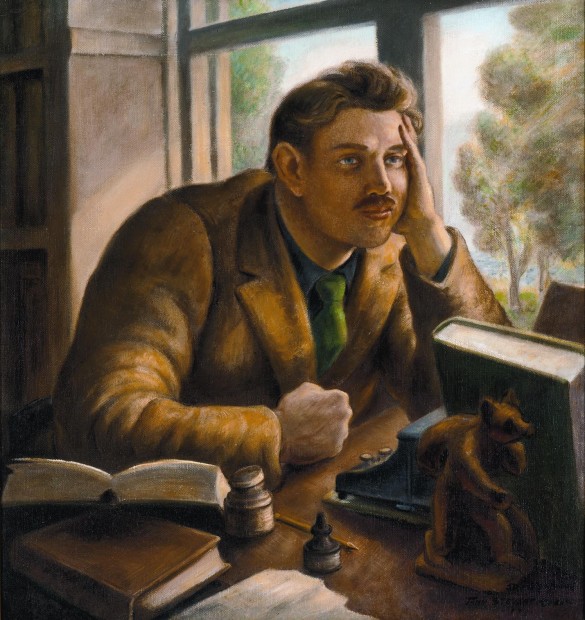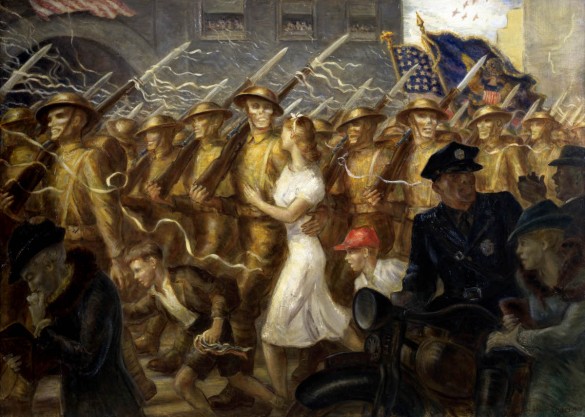Written by Nicole Gaudier, Curatorial Intern
The current exhibit Modern Dialect: American Paintings from the John and Susan Horseman collection, on display in the Mason Gallery until January 5, 2014, contains works made by various artists in the early to mid 20th century. The Cummer Museum of Art & Gardens’ permanent collection also contains works by three of these artists: John Steuart Curry, George Wesley Bellows,and William Zorach.
John Steuart Curry (1897-1946):
John Steuart Curry was born and raised on a farm near Dunavant, Kansas. After studying in Kansas City, Chicago, and Paris, Curry came to prominence in the late 1920s with paintings inspired by his midwestern upbringing. Curry is identified with the Regionalist movement through his depictions of the history, people, and landscape of the American Midwest.
Curry entered the most productive and successful period of his career in the 1930s. He received mural commissions as part of the Federal Art Project, which employed artists during and after the Great Depression. His public murals concentrated on themes of religious intolerance, racial discrimination, and social upheaval.

John Steuart Curry (1897 – 1946), Portrait of Stanley Young, 1932, Oil on canvas, Collection of John and Susan Horseman.
During his time on the East Coast, Curry came to know many artists and writers. His Portrait of Stanley Young, painted in 1932, captures the aspiring author and playwright three years before he became a literary critic for the New York Times. For an artist who often focused his work on the external forces of nature, Curry’s portrait of Stanley Young reveals an ability to describe the inner man.

John Steuart Curry (1897 – 1946), Parade to War, Allegory, 1938, oil on canvas, Gift of Barnett Banks, Inc., AG.1991.4.1.
Parade to War, Allegory was painted in the wake of the Great Depression and on the eve of World War II. Curry turns the pageantry of a parade into a scene of apprehension and dread. This is noticed the most in the skeletal faces of the young soldiers. The panic and sorrow of the two women in the foreground contrast with the hopeful innocence of the central striding couple and the young boys gathering streamers. This painting represents the isolationist attitudes and growing disillusionment expressed by an increasing number of Americans in the late 1930s.
Portrait of Stanley Young is currently on display in the Modern Dialect exhibit in the Mason Gallery and Parade to War, Allegory is on display in the Lane Gallery.


